The Planned Thirty Meter Telescope On Mauna Kea Raises Ethical Concerns
17:31 minutes
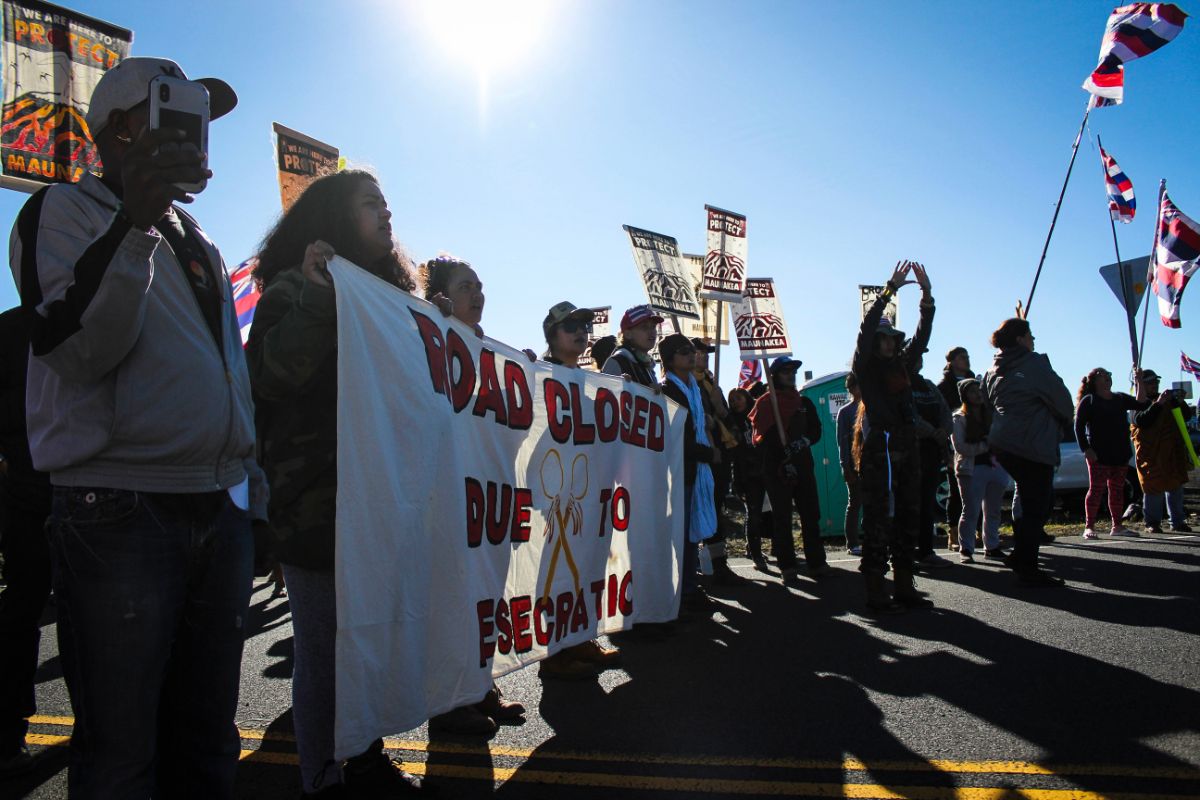
Mauna Kea is the tallest mountain in Hawaii, towering over the Pacific at nearly 14,000 feet. That high altitude, combined with the mountain’s dry, still air and its extreme darkness at night, make it an ideal place for astronomy.
There are already 13 observatories on the summit plateau. Now, astronomers want to build another, called the Thirty Meter Telescope, or TMT, which would become the largest visible-light telescope on the mountain. However, many native Hawaiians don’t want it there for a multitude of reasons:
“The notion of pursuit of knowledge is an important one here,” Kawika Winter, a multidisciplinary ecologist at the Hawaii Institute of Marine Biology and the He’eia National Estuarine Research Reserve, told Science Friday in an interview earlier this week. “But is it pursuit of knowledge at all costs? Is it pursuit of knowledge at the expense of our humanity?
“From the native Hawaiian perspective this is just the same thing that’s happened before. It’s preventing people from accessing sacred places. It’s desecration of sacred places through construction. It’s all of these issues, but this time it’s for a good reason. This time it’s for science, this time it’s for knowledge, so now it should be OK, right? But it’s the same thing that’s been happening for 200 years. It doesn’t matter what the reason is.”
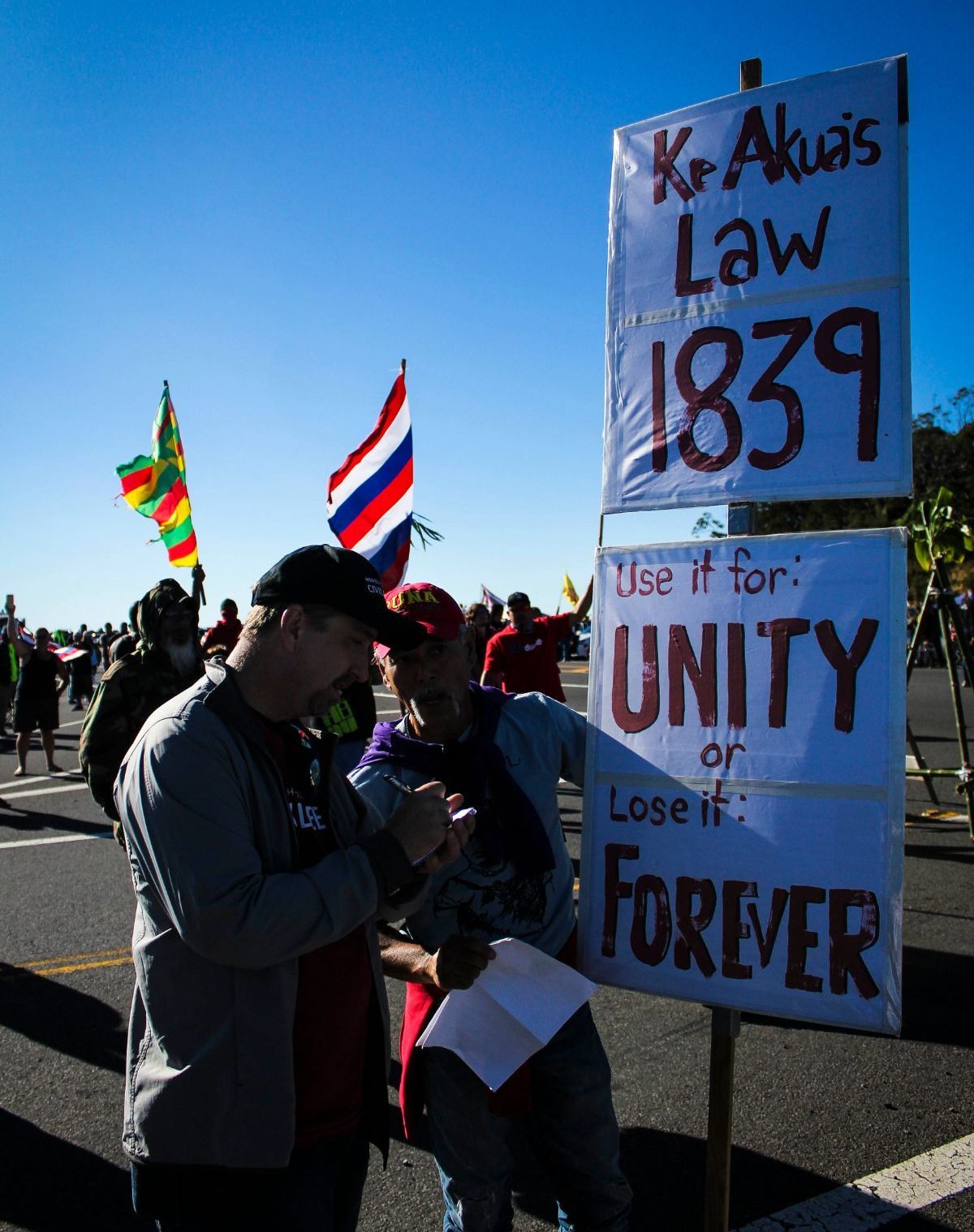
Winter says there needs to be a new model for integrating Indigenous peoples into the process.
Many native Hawaiians say the way this fight has been portrayed in the media—as Hawaiian culture versus science—is disrespectful of their culture, ignorant of their motives, and oblivious to the fact that science has long been an important part of traditional Hawaiian culture. Nearly a thousand scientists and astronomers have now signed an open letter in solidarity with those who would like to see a halt in construction.
And some have suggested that the Thirty Meter Telescope should be built in the Canary Islands instead, where an existing telescope complex enjoys a lofty perch over the Atlantic Ocean. But even that solution isn’t without its detractors.
“This is sort of encouraging a musical chairs of colonialism, where the baggage of building this giant instrument on one observational area that happens to be sacred to Hawaiian people is moved to another place where there are probably equal consequences to the Indigenous people of the Canary Islands,” Keolu Fox, an assistant professor of biological anthropology at the University of California, San Diego, told Science Friday this week. “It doesn’t provide a clear-cut solution, it’s just a band-aid on something where we need to take away the knife.”
In this segment, we’ll talk with Trisha Kehaulani Watson, vice president of the non-profit Aina Momona, in Honolulu, about the conflict, and the past, present, and future of astronomy at Mauna Kea, which she wrote about in Vox. And Rosie Alegado, an associate professor of oceanography at the University of Hawaiʻi, Mānoa, joins to talk about science in Hawaiian culture and the ethical concerns underpinning every field of science, the topic of her recent editorial in Nature.
View more scenes from Mauna Kea below, photos courtesy of Makawalu Photography.
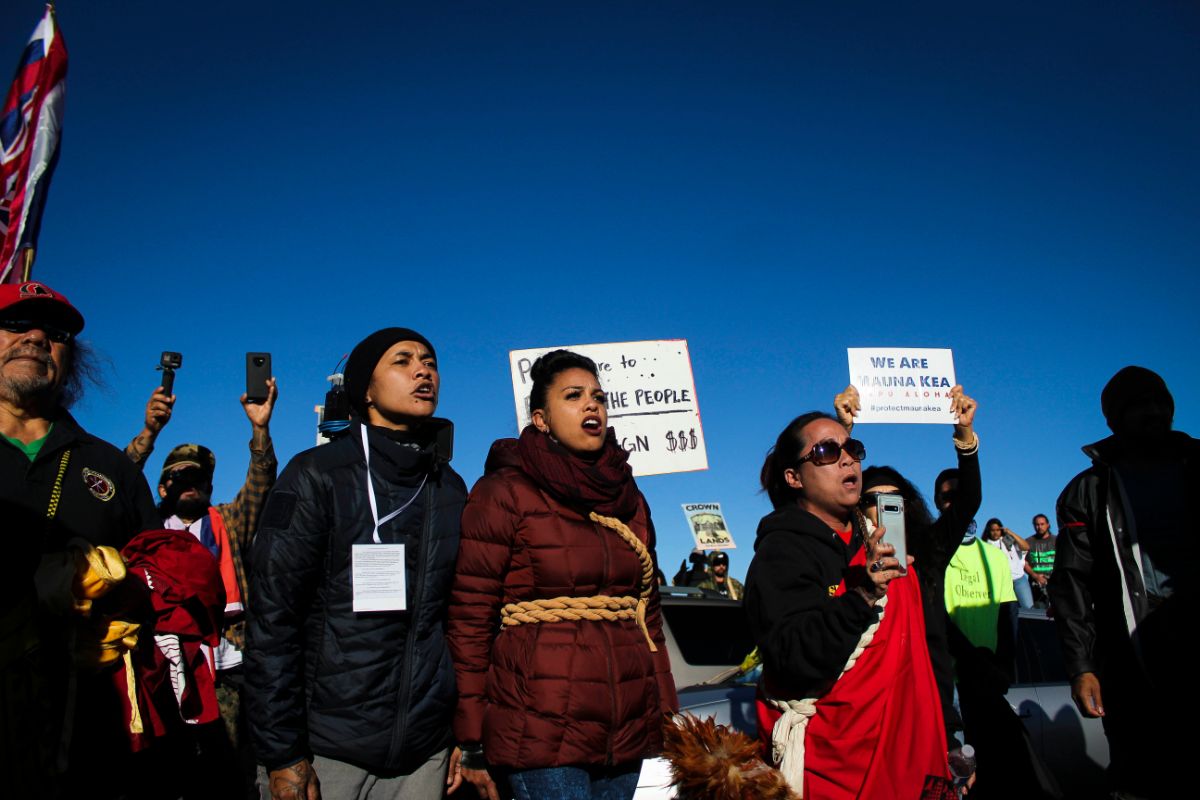

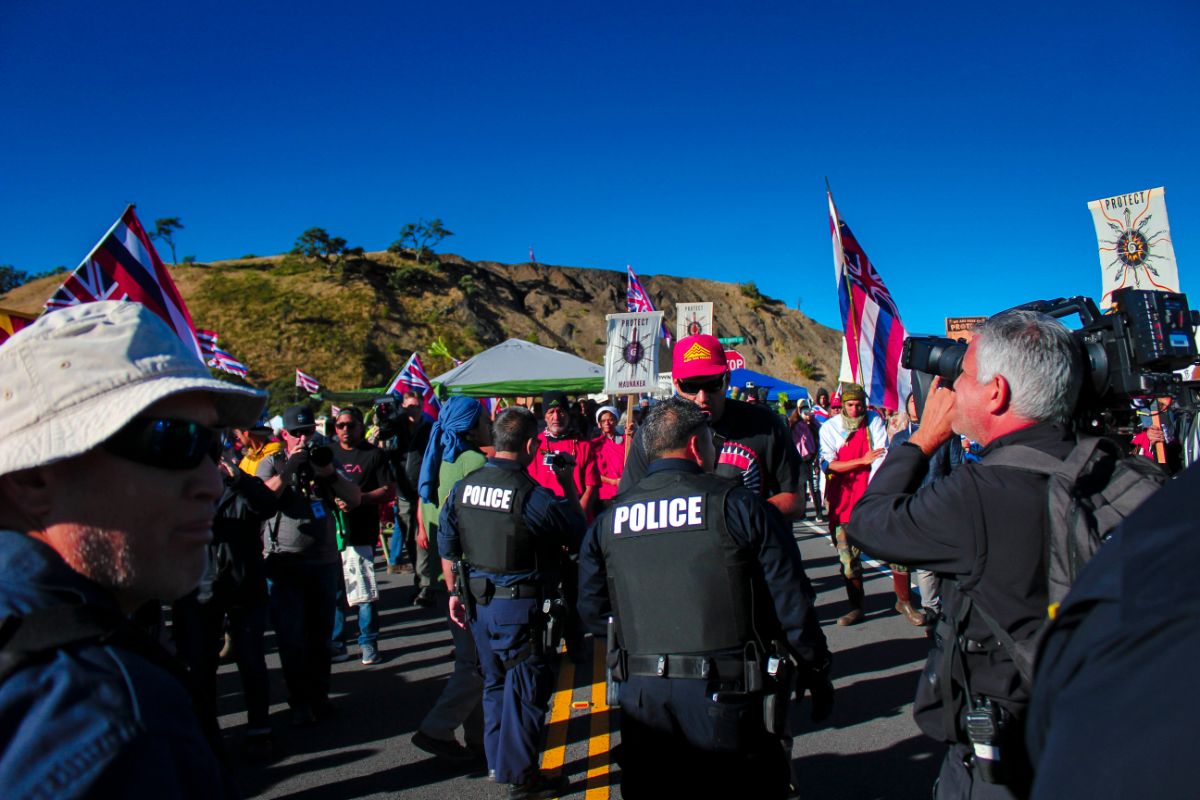
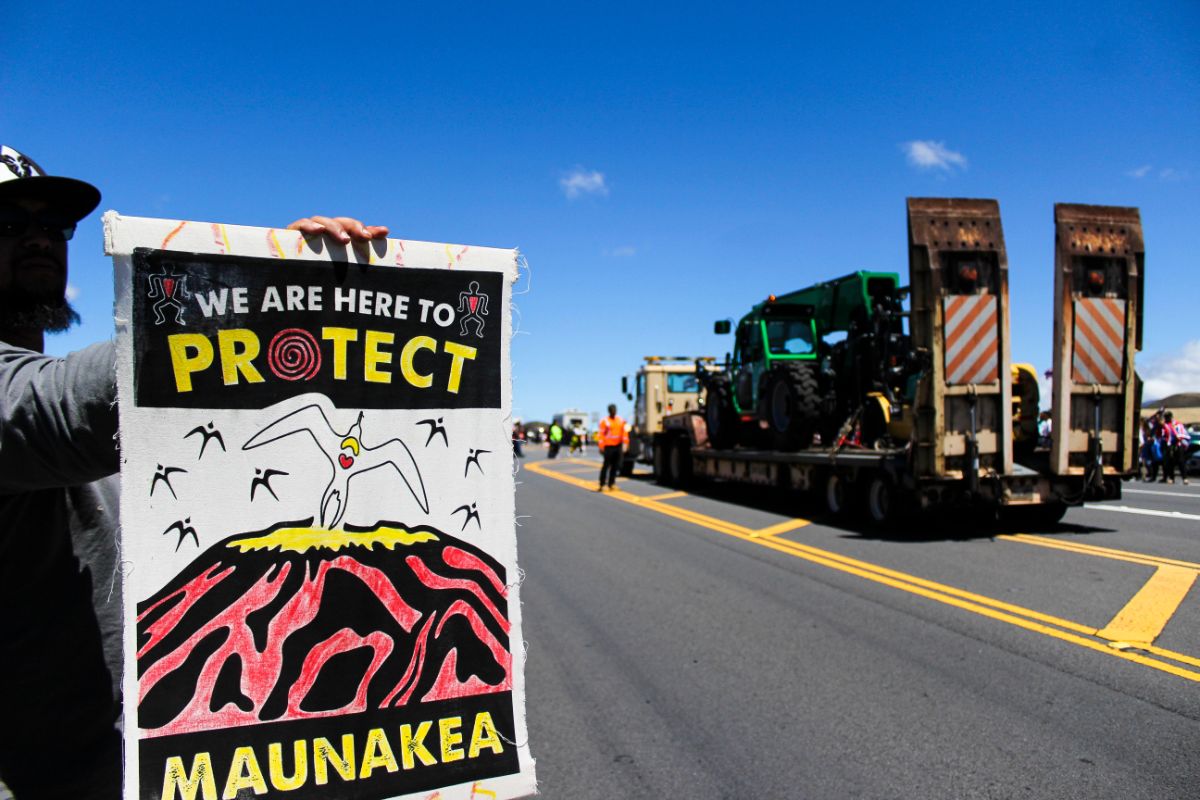
Invest in quality science journalism by making a donation to Science Friday.
Rosie Alegado is an associate professor of oceanography at the University of Hawaiʻi, Mānoa in Honolulu, Hawaii.
Trisha Kehaulani Watson is a writer and Vice president of the non profit Aina Momona, in Honolulu, Hawaii.
IRA FLATOW: This is Science Friday. I’m Ira Flatow. Mauna Kea is the tallest mountain in Hawaii, towering over the Pacific at nearly 14,000 feet. That altitude, combined with the mountain’s still, dry air and extreme darkness at night, make it an ideal place for astronomy.
And there are already 13 observatories on the summit plateau. But now astronomers want to build another, called the Thirty Meter Telescope, or TMT, which would become the largest visible-light telescope on the mountain.
But many native Hawaiians don’t want it there for multiple reasons. We’ve talked with Kawika Winter, a multidisciplinary ecologist at the Hawaii Institute of Marine Biology, who had this to say.
KAWIKA WINTER: From the native Hawaiian perspective, this is just the same thing that’s happened before. It’s preventing people from accessing sacred places. It’s desecration of sacred places through construction. It’s all of these issues. But this time, it’s for a good reason. This time, it’s for science. This time, it’s for knowledge. So now, it should be OK, right? But it’s the same thing that’s been happening for more than 200 years. It doesn’t matter what the reason is.
IRA FLATOW: And many native Hawaiians say the way this fight has been portrayed in the media as Hawaiian culture versus science is disrespectful of their culture, ignorant of their motives, and oblivious to the fact that science has long been an important part of traditional Hawaiian culture.
Today, we’re going to talk about all of that and get an update about what’s happening on the mountain with my guests. Let me introduce them. Rosie Alegado is an associate professor of oceanography at the University of Hawaii at Manoa. She wrote about the TMT in Nature. She joins us from Hawaii Public Radio in Honolulu. Welcome to Science Friday.
ROSIE ALEGADO: Aloha, Ira.
IRA FLATOW: Aloha to you, too. Trisha Kehaulani is vice president of the nonprofit Aina Momona. She wrote about the conflict in Vox. Welcome to Science Friday.
TRISHA KEHAULANI WATSON: Thank you.
IRA FLATOW: Interesting story, Trisha. Set the scene for us. Give us a snapshot of how we got to this point.
TRISHA KEHAULANI WATSON: Well, we really got to this point over a number of decades. Native Hawaiians have always, and including environmental groups, have always had concerns about the observatories that were being built at the summit of Mauna Kea. This particular conflict with the Thirty Meter Telescope really started about a decade ago, when they started the permitting process. So since 2011, there have been regular legal challenges to this telescope in this project.
That came to a head recently when they were about to start construction. And then you had a number of native Hawaiians, originally a fairly small number, but including a number of elders who placed themselves in the middle of the access road to block the construction vehicles.
And I believe it was July 17, 35 native Hawaiian elders were arrested by law enforcement in their efforts. And that really created sort of a firestorm not even locally, but nationally, where people were really appalled that there would be law enforcement and the National Guard called in on native Hawaiian elders who really were just trying to protect a site they consider sacred.
IRA FLATOW: Is that where we stand now? Has there been any budge on the government side?
TRISHA KEHAULANI WATSON: There’s been a little bit of budge. They’ve now rescinded the emergency proclamation that allowed the governor to call in the National Guard. A lot of the additional law enforcement troops that were called in have been returned to their islands of origin. And we, for better or for worse, have two hurricanes headed towards us. So I think everybody has recognized that there needs to be a little bit of pause on everything, and people are now sort of preparing appropriately.
IRA FLATOW: Trisha, sorry for leaving out your last name– Watson. I introduced you–
TRISHA KEHAULANI WATSON: Oh, it’s fine. Absolutely fine.
IRA FLATOW: Let’s go with my next question. Rosie, this conflict has been portrayed in the media as a fight between Hawaiian culture and science, but interestingly, you write in your editorial in Nature that, quote, “As a native Hawaiian scientist who studies how marine microbes have influenced ecosystems and evolution, it is not my experience that Hawaiian religion or culture has a problem with Western science.” Please expound on that a little bit for us.
ROSIE ALEGADO: That’s correct. I mean, I think the most important thing to realize is that all cultures have science. Science is the methodology by which we discover information about our natural world. And that can be very applied in nature, or it can be very theoretical, in meaning that we don’t know what the current applications of that can be.
For Hawaiian culture, for thousands of years, that was very applied. So in other words, we utilized navigation, which is an accretion, an accrual of knowledge about oceanography, atmospheric science, and biology, to get to voyage between islands. And then of course, we were completely self-sufficient and sustainable on our islands for over 1,000 years. And that took ingenuity, and know-how, and knowledge of sustainable practices.
So by those just really major accomplishments, we can really see that Hawaiian culture and science were really intertwined. And what I mean by the fact that I have not experienced Hawaiian culture being in conflict with Western science is that historically, what we really have seen is that we know that there has been conflicts between culture and religion. But those have been pretty particular to Western science.
So if we look at– my favorite example is the prosecution of Galileo Galilei by the Catholic church, right? So that really, I think, sets up this conflict of seeing– excuse me– Catholicism in conflict with Western science. But we have to remember that there are other knowledge systems that exist outside of Western culture, and those often do not have a conflict with science inherently.
IRA FLATOW: Our number, 844-724-8255, if you’d like to get in on the conversation. Trisha, how does this protest compare to other conflicts? Example, Standing Rock protests over the Dakota Access Pipeline.
TRISHA KEHAULANI WATSON: Well, I actually think we, for better or for worse, of the Dakota Pipeline conflict, we really benefited from it as a Hawaiian community. A number of our protectors who are currently in Mauna Kea went to Standing Rock and participated. And I think when I went to Mauna Kea this past weekend, so much of the infrastructure of what has been built around this protest– because remember, it went from maybe 50 people to 3,000 people in a very short period of time– was really learning from Standing Rock, learning how they put that infrastructure together, learning how they were able to, in a very healthy and loving manner, take care of 3,000 people.
And that’s really what it’s been these past couple of weeks, the ability to make sure all of those people have their medical needs taken care of, their food needs taken care of, their sleeping needs taken care of. So we are so grateful to the First Nations community who has been tremendously supportive of what we’re doing here and then basically went first, at least in modern times, as to how to teach us how to protest in this very nonviolent manner.
IRA FLATOW: Are people– and I’ll ask both of you this question– are people more upset, or most upset, that they just were not consulted about this when– not that they’re adverse building the telescopes per se, but they’re not consulted? And even I was reading that they’re upset about how the other telescopes on the mountain now are not being taken care of, the ground that they’re on.
TRISHA KEHAULANI WATSON: So both of those are true. So Rosie and I both have PhD’s. I also have a law degree. And I think what we saw was this project very intentionally avoid going through the National Historic Preservation Act. So despite the fact that they had federal funding, they were able to not go through Section 106 consultation. And had they done so, they would have had to reconcile the fact that there are native Hawaiians who consider this site of religious and cultural value.
And we know that they’re seeking now National Science Foundation funding. So they, at some point, will have to reconcile that. But I think you’re absolutely correct. It speaks to some of the frustrations that although they obtain certain permissions, they really didn’t go through consultation with the community. And I feel like the science community, as Rosie very well wrote in her article, has better ethics than that, and these systems in play. And perhaps Rosie can speak to that.
IRA FLATOW: Yes, please, Rosie.
ROSIE ALEGADO: Yeah, I mean, I think that science, for all of the amazing progress that it has made towards humanity, technological innovations, and improving our health, we cannot operate outside culture, and therefore, society morals and values. And we continue to grapple with that as scientists, and I think it’s really important to recognize that even if our science in particular might not feel like it directly affects community, perhaps the placement of our instruments where we deploy things may have an effect on the local community.
And I think it’s important for science to always look and recognize where its blind spots are– scientists, rather– where our blind spots are. And it’s just really unfortunate that astronomy as a science is wrapped up in this. Because I would say as a community, Hawaiians really love astronomy. And it’s just that the process by which these telescopes have been managed by UH over the last 50 years has really been subpar on this matter.
IRA FLATOW: So this is one way to address that issue, too. Interesting.
ROSIE ALEGADO: Absolutely.
IRA FLATOW: There’s been talk of building this telescope in the Canary Islands, instead of Hawaii. We talked with Keolu Fox, assistant professor of biology anthropology at the University of California, San Diego. And he had this to say about that proposal.
KEOLU FOX: This is sort of encouraging a musical chairs of colonialism where the baggage of building this giant instrument on one observational area that happens to be sacred to Hawaiian people is moved to another place, where there are probably equal consequences to the Indigenous people of the Canary Islands, which was colonized in 1402 by the Spanish. So it doesn’t provide a clear-cut solution. It just is a Band-Aid on something where we need to take away the knife.
IRA FLATOW: Trisha, you’ve been looking into this idea of relocating the telescope, correct?
TRISHA KEHAULANI WATSON: Yes. There have been numerous native Hawaiians who have been in contact with the local community at La Palma. Unfortunately, their Indigenous people are no longer around. It was colonized in 1402 as Keolu said. But the Indigenous people don’t exist there anymore. So it’s really a matter of looking at the local community. And from everything we’ve received, the local community does want it.
So I do think you’re dealing with two very different scenarios, one where you have native Hawaiian people where this is effectively our garden of Eden. This is perhaps the most important spot in our cosmology. And you have a local community in La Palma who seems far more welcoming to this project than the local people in Hawaii.
IRA FLATOW: So you’re saying, well, just move it there, and it makes everybody happy.
TRISHA KEHAULANI WATSON: Well, it possibly does. I mean, I think we are very sensitive to not playing– I think as Keolu put it– colonial musical chairs. We would never want to harm another group. We would never want to impose on another place what’s being imposed on us. So I think we have a heightened sensitivity to make sure we are working with that local community and hearing from them.
And again, everything we’re hearing seems to indicate that they would like it. They see the benefits to their economy, whereas we don’t have that agreement here in Hawaii. And they have gone through steps, and they’re welcoming to it. So I think there might be some issues with the siting there insofar as the altitude isn’t as high, so recognizing that the site might not be as ideal for an extremely large telescope, the ELT. But I think, as Rosie mentioned earlier, the social and the cultural conditions are far more suitable to this project.
IRA FLATOW: Mhm. But is there a compromise still open to Hawaii? If the state, the federal government, could become more sensitive and cooperative with your feelings about the place and about the maintenance of the older telescopes, which are not even working anymore, would you be open? Would the Hawaiians be open to allowing for the construction there?
ROSIE ALEGADO: This is Rosie here. To be honest, I would have said that it might have been possible in 2015, that by really opening it up and having a process by which perhaps there could have been an integration of how could this telescope and the way that it asks questions– what are some of the questions that the local community would like to explore? What research questions are they interested in knowing? How might the construction of the building itself incorporate a lot of the spiritual and cultural elements that are so important to Mauna Kea? None of that was done. So first of all, there’s that.
In addition to that, I really must emphasize that the arrest of our elders– and these are some of the most revered elders in Hawaii today– was just such a deep, deep insult to the Hawaiian community, and paired that with such a show of force that was completely unnecessary. The people who were arrested ranged from mid-50s or 60s to 80 years old. It just was such an unmitigated, unnecessary show of force that I think it’s such a deep, deep wound right now, I really don’t know that we can go backwards–
IRA FLATOW: I’m Ira Flatow–
ROSIE ALEGADO: [INAUDIBLE]
IRA FLATOW: I’m sorry. I’m Ira Flatow. This is Science Friday from WNYC Studios, talking about the controversy in Hawaii over building the TMT telescope there. The University of Hawaii president David Lassner made a statement about this, this week.
He said, “I realize that TMT now represents a huge source of friction in our work to become a model Indigenous-serving university and Hawaiian place of learning. We will need many conversations over the months ahead to work on that together. My heart and mind are open as I continue to listen and share.”
Trisha, you talked with the University of Hawaii president about various compromises that could be made on the mountain. What did he say? Are you optimistic at all?
TRISHA KEHAULANI WATSON: Well, I think it’s important to note that David has been part of Hawaii for a long time. So they hired from within when they selected this president. And he and I happened to be at Mauna Kea at the same time and caught the same flight home. So we did have a great conversation, and he, I think, is very sincere in his belief. And I think he is also equally sincere in wanting to make the university a Hawaiian place of learning.
I think there are many more dialogues that need to happen about the future of Mauna Kea, period, at this point. And my hope is that he begins to listen to people that not only just agree with his perspective, but vehemently disagree with it. And I think that effort is being made.
But I think Rosie is right. I think there have been activities in the last couple of weeks that have been so aggressive and so deeply hurtful to the Hawaiian community, that I think it will take some sort of prolonged standdown before people feel comfortable coming to the table again.
IRA FLATOW: Let me see if I can get a quick phone call in to Gwen in Cambridge, Massachusetts. Hi Gwen, quickly please.
GWEN: Hi. I just want to say as a student of Hula in Cambridge, Massachusetts and having just read Sarah Vowell’s history of the colonization by Massachusetts natives of Hawaii in the 1820s, that I was just horrified to hear about the decimation of populations by people from Massachusetts bringing Christianity and then sailors, and bringing to the east of Hawaii, and the number of native people who died in this. And I just feel like the history is too long and too horrible. And we do a dance to Mauna Kea, and it’s incredibly moving. I would love to see the mountain.
IRA FLATOW: I’m going to–
GWEN: But anyway, I–
IRA FLATOW: I’m going to have to go, Gwen. We got the gist of what you’re trying to say. Thanks for your call. So let me ask you, Trisha, where do you see this all ending up?
TRISHA KEHAULANI WATSON: Well, my hope– I genuinely believe it would take some sort of miracle for that project to proceed. You literally have thousands of people blocking the road. And they’re there for the long haul. You have people moving in, basically. But again, there’s a larger issue of the management of the mountain that Rosie talked about earlier, and that that really has not been done well. And there are needs for dialogues that they have just avoided having. And I think anytime, science needs to be engaged at all times with the community.
IRA FLATOW: That’s what we’re trying to do here. Rosie Alegado, associate professor of oceanography at University of Hawaii, and Trisha Kehaulani Watson, vice president of the non-profit Aina Momona. Thank you for taking time to be with us today.
Copyright © 2019 Science Friday Initiative. All rights reserved. Science Friday transcripts are produced on a tight deadline by 3Play Media. Fidelity to the original aired/published audio or video file might vary, and text might be updated or amended in the future. For the authoritative record of Science Friday’s programming, please visit the original aired/published recording. For terms of use and more information, visit our policies pages at http://www.sciencefriday.com/about/policies/
Christopher Intagliata was Science Friday’s senior producer. He once served as a prop in an optical illusion and speaks passable Ira Flatowese.
Ira Flatow is the founder and host of Science Friday. His green thumb has revived many an office plant at death’s door.